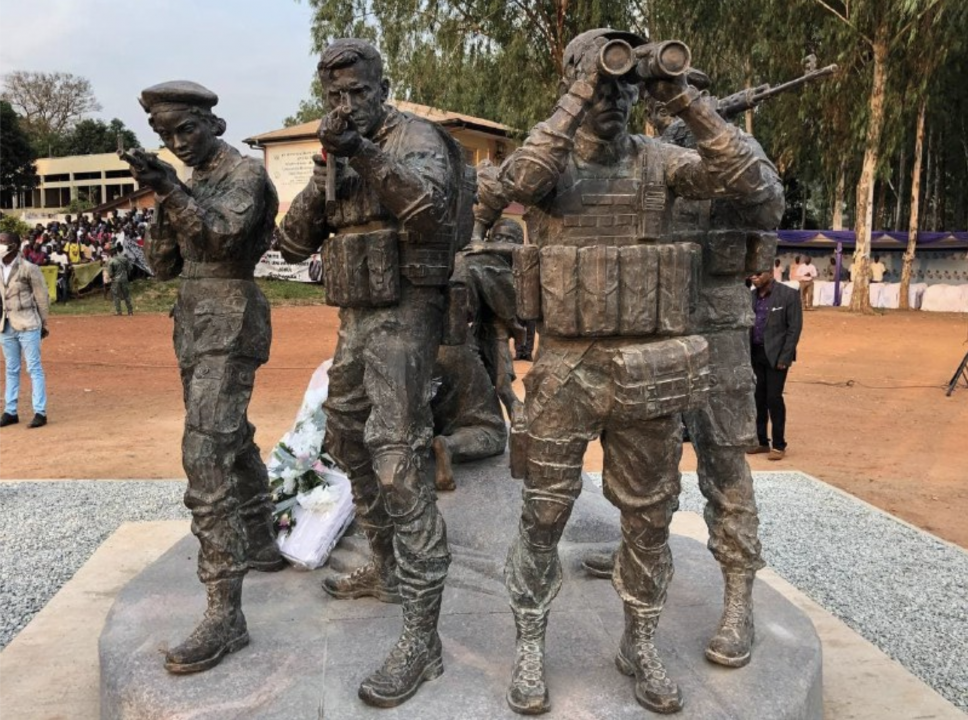First Russian mercenary statue in Africa identified in the Central African Republic
Newly surfaced photos confirm a new statue commemorating Russian mercenaries in the heart of Bangui, CAR’s capital city.
First Russian mercenary statue in Africa identified in the Central African Republic
Share this story
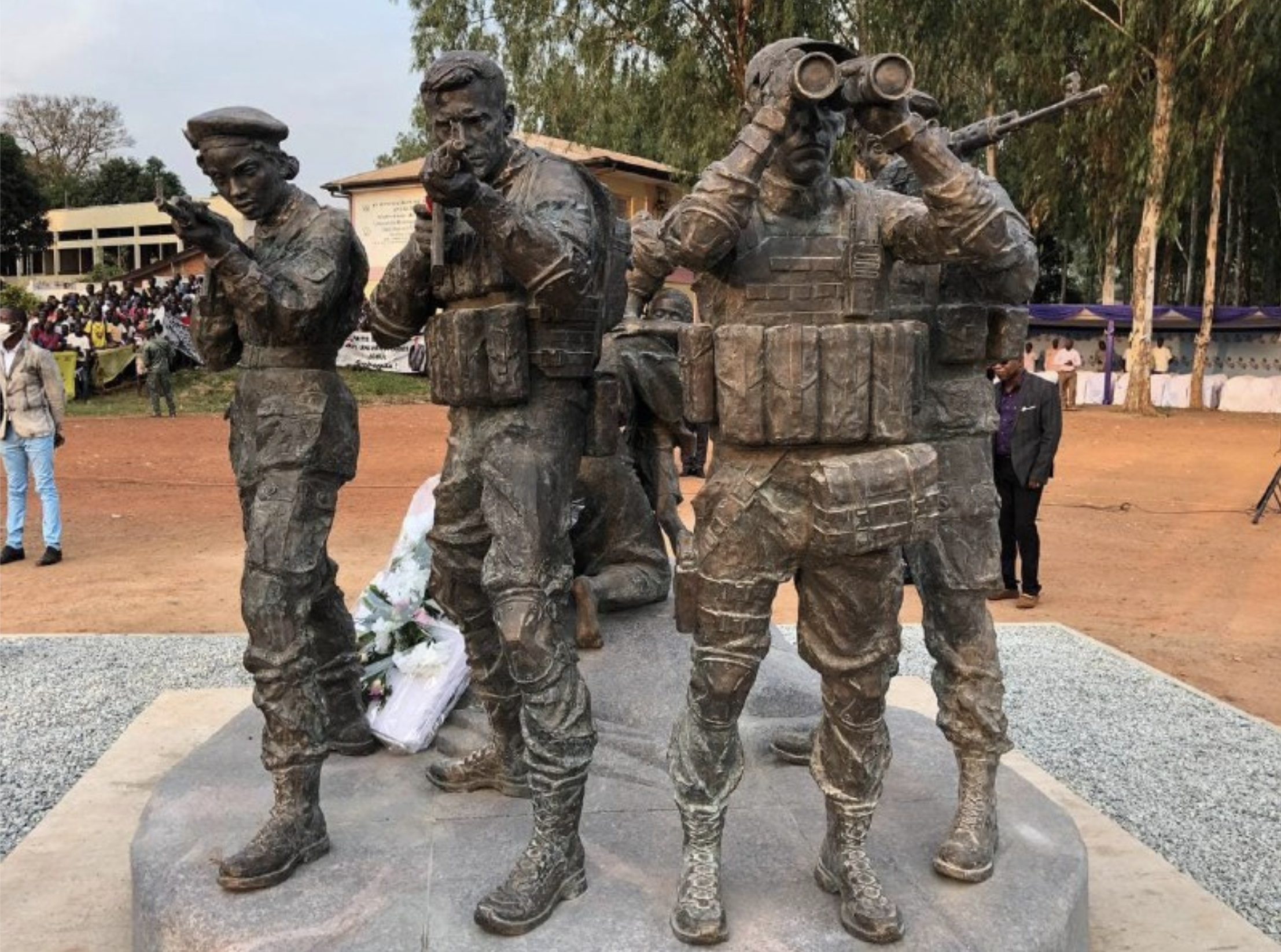
Recently surfaced photos reveal a new statue commemorating Russian mercenaries in Bangui, Central African Republic (CAR), the latest in a series of mercenary statues previously identified in Europe and the Middle East.
New open-source evidence reveals that Russian private military companies (PMCs) are continuing their soft power measures in countries where they conduct operations. On November 28, 2021, the first photos of the newly erected statue appeared on Telegram and other social media platforms. The DFRLab has tracked the installation of Russian PMC statues for several years, with prior examples found in Ukraine, Syria and Russia. This is the first model statue to be identified in Africa, and is significantly more complex than previous statues.
The appears of the Bangui statue comes as little surprise, as these statues continue to appear in countries where Wagner Group mercenaries are present, usually close to the locations where they have been documented conducting operations. The new statue also comes in the wake of several new action movies about Wagner mercenaries fighting in Africa being released in Russia.
Military intervention, then a statue unveiling
Russian PMCs were initially invited to the Central African Republic by the CAR government of help tamp down the country’s ongoing internal conflict, which began in 2012. Since the signing of a deal with Moscow in 2018, by various estimations, between 1,200 and 2,000 Wagner troops have participated in CAR-based operations. Some experts suggest there might be as many as 3,000 troops currently operating in the country, yet the actual number remains unknown. Initial enthusiasm for the mercenary intervention was short-lived, as reports of rape, killings and other crimes in rural areas of the country began to circulate. The UN previously reported that “civilians, peacekeepers, journalists, aid workers and minorities” have on numerous occasions been “violently harassed and intimidated” by Wagner forces operating in CAR.
The new Russian PMC statue first appeared in Bangui on November 28, 2021. CAR President Faustin-Archange Touadéra himself unveiled the newly erected statue, standing on a red carpet, with sizable crowds of locals observing the ceremony. Coverage of the statue unveiling appeared in local media outlets such as the Nouvelles d’Afrique, and were also widely covered on Russian media. Yet the most compelling visual evidence of the new statue appeared on social media.
A day earlier, photographers documented the statue being hoisted into place by a crane.
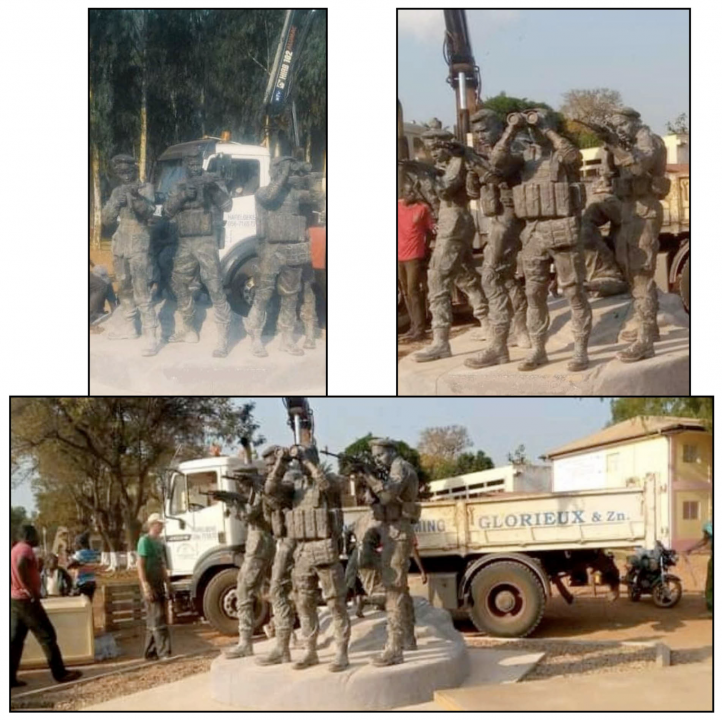
The DFRLab has previously identified Wagner statues that were secretly erected Syria, Ukraine and Russia. All of them were identical, showing a soldier protecting a child hugging the soldier’s leg. The first two were identified in March 2018 in Palmyra, Syria, and Luhansk, Ukraine. The third statue was identified in March 2019 in Krasnodar, Russia. These statues confirm the presence of mercenary activity in these countries, as they were all erected close to locations where significant Russian mercenary operations had been conducted. In these instances, Wagner previously fought the Ukrainian Army in Ukraine’s Donbas region, and ISIS fighters in Palmyra, Syria. Meanwhile, Krasnodar hosts Wagner’s main training ground in Russia.
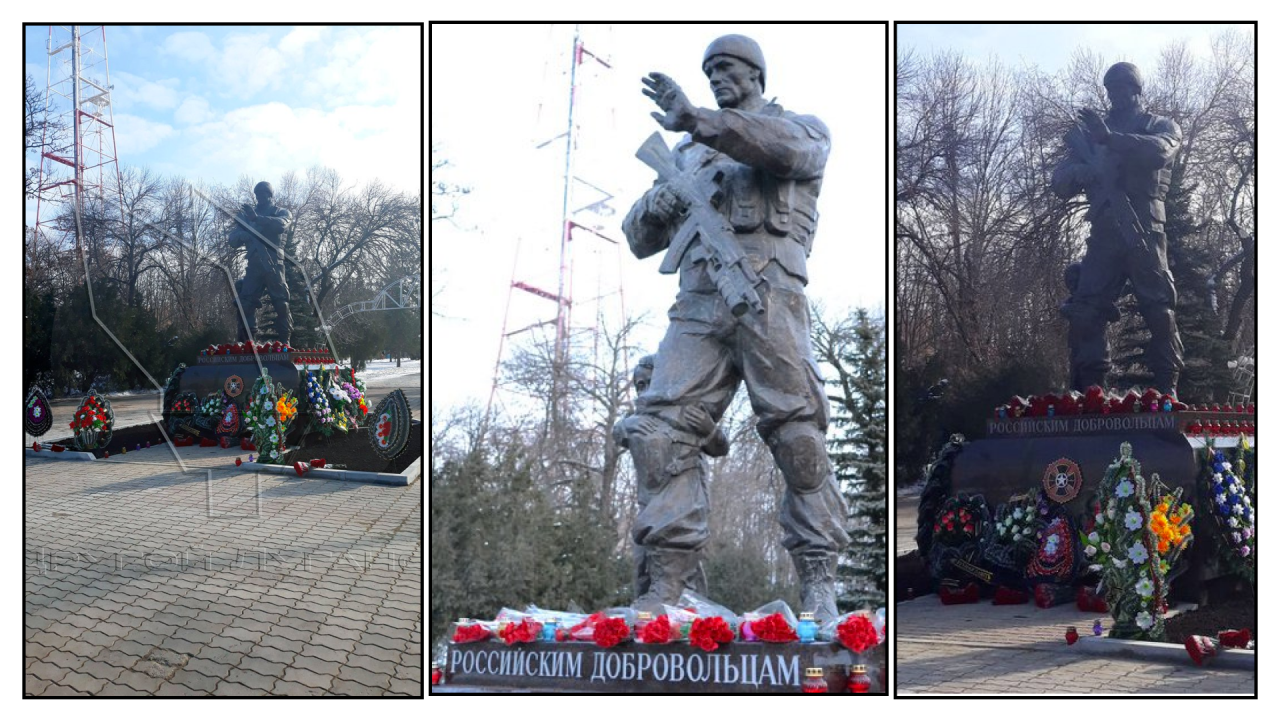
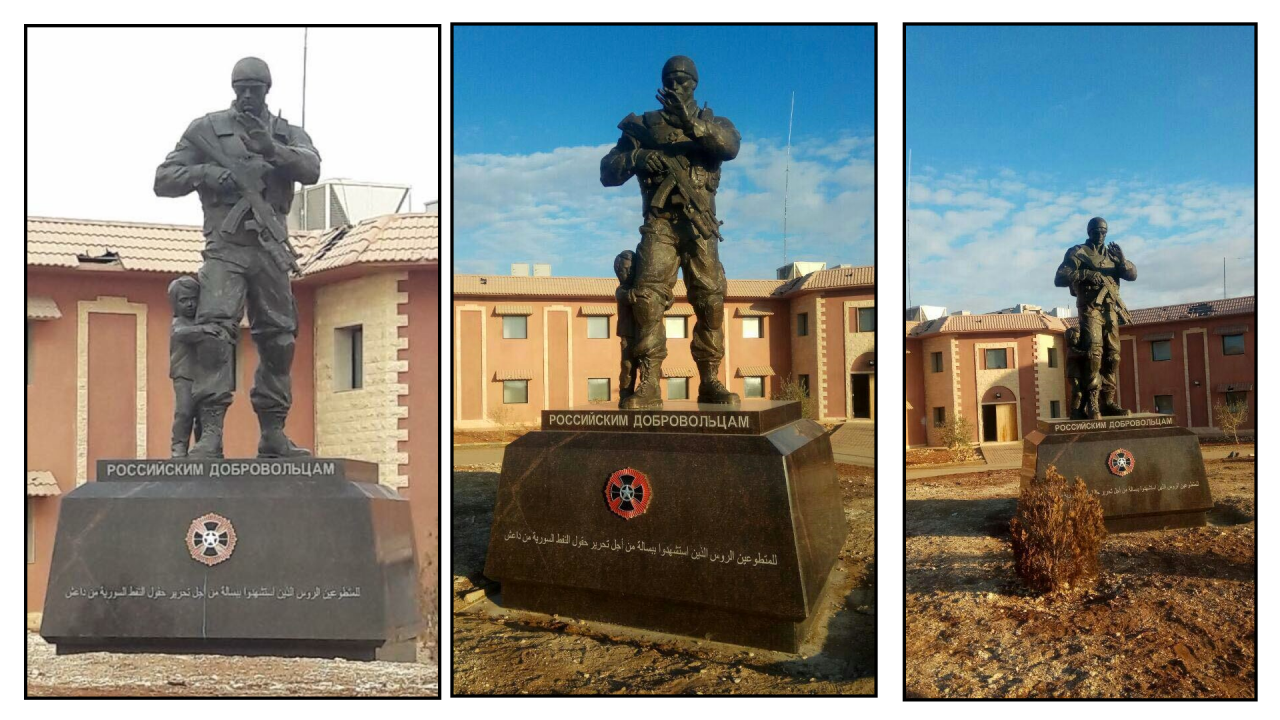
In contrast, the newly unveiled CAR statue is significantly more complex, featuring four soldiers and a mother holding two children. Visual analysis suggests that the two soldiers standing at the front of the statue appear to be Russian mercenaries, while two soldiers back and to the side of them are members of CAR’s Central African Armed Forces (FACA). Similar analysis has been expressed by additional open source researchers. The Russian mercenaries closely resemble the soldiers featured in statues in Ukraine, Syria and Russia, with highly similar kneepads, boots, vests, weapons and additional gear.
Another change from previous statues is how the mercenaries featured in the CAR statue appear to serve a different symbolic function. They are presented as military advisers or instructors, while the FACA troops are portrayed as actively defending the woman and her children, who in turn represent the people of the Central African Republic.
Geolocation
The DFRLab geolocated the statue, as none of the published news articles or social media posts provided a concrete location beyond it being in the capital city of Bangui. The various photos of the statue presented an almost 360-degree view of the location’s surroundings, allowing for both geolocation and a closer inspection of the statue itself.
The main clue of the statue’s location was a seating section of a stadium, seen in the background of one of the photos. The light green color of the stadium seating helped speed up the process, limiting it to the area surrounding Bangui’s main stadium, Stade Barthélemy Boganda.
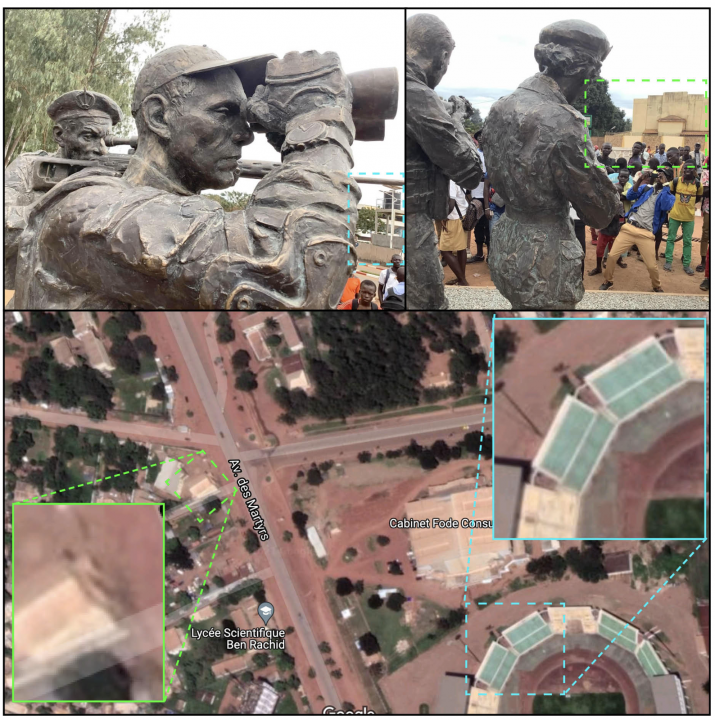
A Université de Bangui building with a distinct roof, visible on the northern part of the junction, served as an additional geolocation detail.

Based on this analysis, it is possible to confirm that the newly erected statue is located in the heart of Bangui, suggesting the importance and symbolic value of FACA cooperation with Wagner mercenaries.
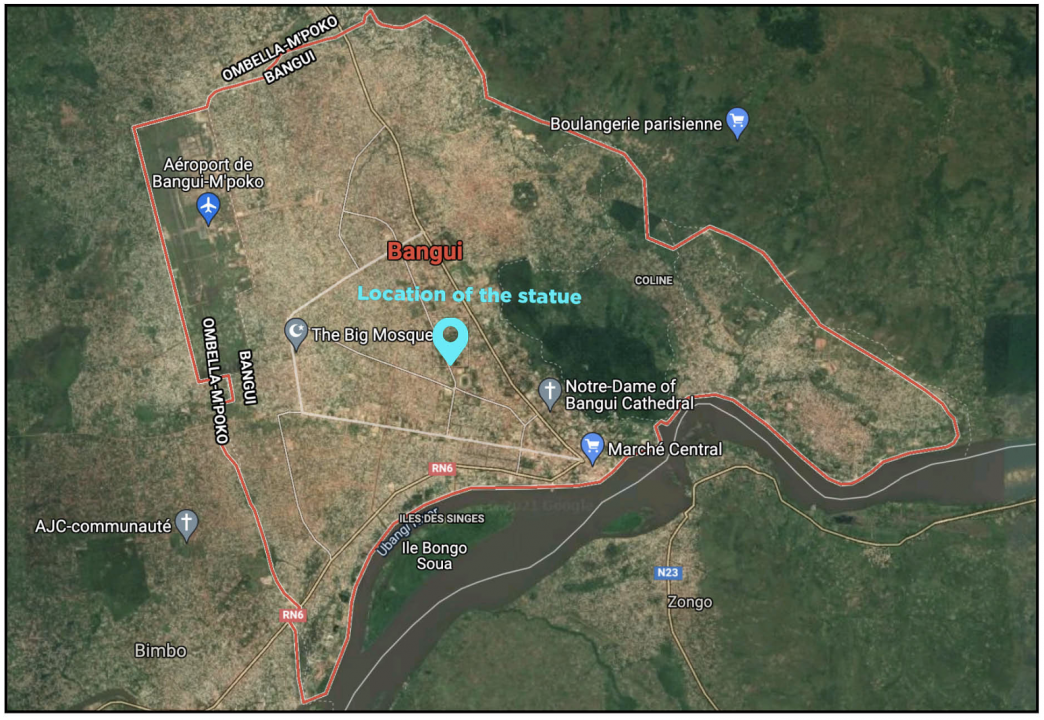
Additionally, some of the surfaced photos feature White soldiers taking photos with the member of the Central African Armed Forces. These individuals are dressed in a type of camouflage that has been previously identified in photos featuring Wagner soldiers in Libya.
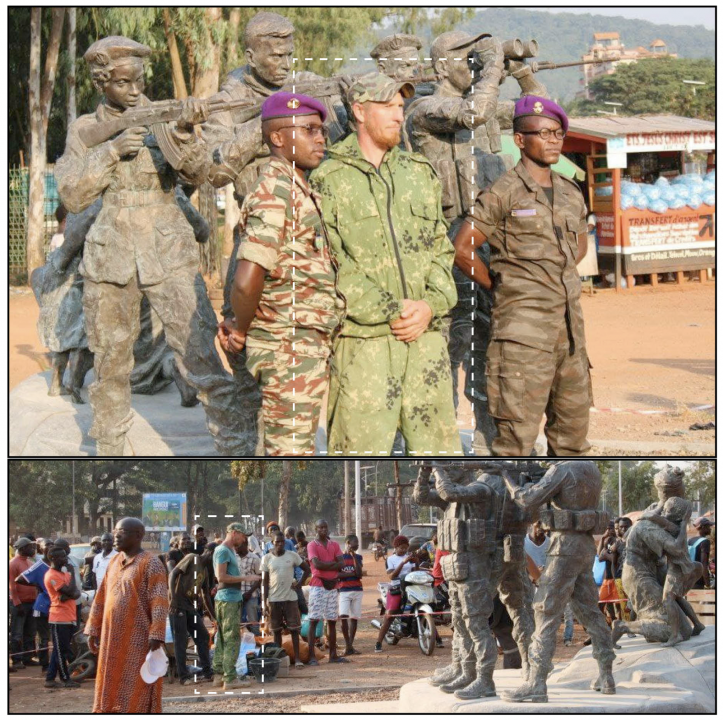
Similar statues will likely continue to appear elsewhere as Wagner’s operational footprint expands, serving as a permanent soft-power visual presence. Wagner soldiers have been reported in Mozambique, the Democratic Republic of the Congo, and Libya, among other African countries.
Cite this case study:
Lukas Andriukaitis, “First Russian mercenary statue in Africa identified in the Central African Republic,” Digital Forensic Research Lab (DFRLab), December 20, 2021, https://medium.com/dfrlab/first-russian-mercenary-statue-in-africa-identified-in-the-central-african-republic-55f9d5ac3abd.

